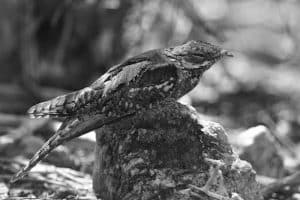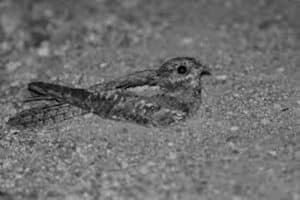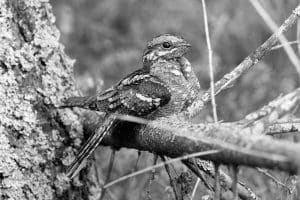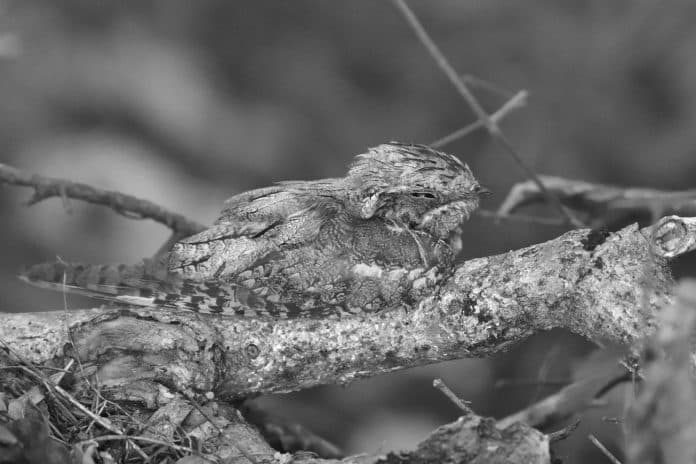Introduction to the Eurasian Nightjar
The Eurasian Nightjar in Tanzania, scientifically known as Caprimulgus europaeus, is a fascinating bird species that can be found in Tanzania. These nocturnal creatures are known for their unique characteristics and behaviors, making them a subject of interest for bird enthusiasts and nature lovers alike. In this article, we will explore the natural habitat, migration patterns, behavior, and conservation status of the Eurasian Nightjar, as well as provide tips for spotting and photographing these elusive birds in Tanzania.
Natural Habitat and Migration Patterns

The Eurasian Nightjar is a migratory bird that spends its breeding season in Europe and parts of Asia before embarking on a long journey to Africa for the winter. In Tanzania, these birds can be found in various habitats, including dry savannas, open woodlands, and forest edges. They are often observed near water sources, such as rivers and lakes, where they can find insects to feed on during the night.
During migration, Eurasian Nightjars cover impressive distances, flying thousands of kilometers to reach their wintering grounds in Tanzania. They typically arrive in the country between September and November and stay until March or April before returning to their breeding grounds. The migration patterns of these birds are influenced by weather conditions and the availability of food along their route.
Behavior and Characteristics of the Eurasian Nightjar
The Eurasian Nightjar is a medium-sized bird with cryptic plumage that provides excellent camouflage during the day. They have mottled brown and gray feathers, which blend seamlessly with their natural surroundings. These birds have large heads, large eyes, and short bills, which are adapted for catching insects in flight.
One of the most fascinating aspects of the Eurasian Nightjar is its behavior. As nocturnal birds, they are most active during the night, using their exceptional night vision and silent flight to hunt for insects. They have a unique hunting technique called “hawking,” where they fly low and catch their prey with their wide mouths. During the day, they rest on the ground, relying on their camouflage to remain hidden from predators.
Conservation Status and Threats to the Species
The Eurasian Nightjar is currently classified as a species of least concern by the International Union for Conservation of Nature (IUCN). However, like many bird species, they face several threats that could impact their populations in the future. Habitat loss due to deforestation and agricultural expansion is one of the significant concerns for the Eurasian Nightjar. Destruction of their natural habitat can disrupt their breeding and foraging areas, leading to population declines.
Another threat to the Eurasian Nightjar is the widespread use of pesticides, which can reduce their prey availability and contaminate their food sources. Climate change is also a potential threat, as it can alter the timing of migration and breeding, affecting the overall population dynamics of these birds. To ensure the long-term survival of the Eurasian Nightjar, it is essential to protect their habitats and raise awareness about the importance of conservation.
Nighttime Hunting and Feeding Habits

As nocturnal birds, the Eurasian Nightjar relies on the cover of darkness to hunt for food. They are insectivores, primarily feeding on moths, beetles, and other flying insects. Their wide mouths and specialized bristles on their bills allow them to capture insects in mid-air with precision.
Eurasian Nightjars are known for their unique hunting technique called “hawking.” They fly low to the ground, using their excellent maneuverability and silent flight to surprise their prey. When an insect is detected, the Nightjar swiftly opens its mouth wide, capturing the insect in flight. This hunting behavior is effective and efficient, allowing them to consume a significant number of insects each night.
Breeding and Nesting Habits
Breeding season for the Eurasian Nightjar begins in their European and Asian breeding grounds before they migrate to Tanzania for the winter. Male Nightjars attract mates by performing an elaborate courtship display, which involves flying high in the sky and making a distinctive “churring” sound with their wings.
Once a mate is chosen, the female Nightjar lays two eggs on the ground, usually on a bed of fallen leaves or dry grass. The eggs are incubated by both the male and female Nightjar for approximately three weeks. After hatching, the chicks are precocial, meaning they are born with their eyes open and covered in down feathers. They leave the nest shortly after hatching and are able to feed themselves within a few days.
Best Locations in Tanzania for Eurasian Nightjar Sightings
Tanzania offers several excellent locations for observing Eurasian Nightjars in their wintering grounds. National parks such as Serengeti, Tarangire, and Ruaha are known to be home to these migratory birds. The open savannas and woodlands in these parks provide ideal habitats for the Nightjars.
When visiting these locations, it is best to explore during the early morning or late evening hours when the Nightjars are active. Look for areas near water sources and open clearings, as these are often preferred for foraging. Patience and quiet observation are key to spotting Eurasian Nightjars, as their cryptic plumage allows them to blend seamlessly with their surroundings.
Tips for Spotting and Photographing Eurasian Nightjars

Spotting and photographing Eurasian Nightjars can be a rewarding experience for any bird enthusiast. Here are a few tips to increase your chances of a successful sighting:
- Visit their preferred habitats: Eurasian Nightjars are more likely to be found in open woodlands, savannas, and forest edges near water sources. Research the best locations and plan your visit accordingly.
- Be patient and observant: Nightjars are masters of camouflage, so it’s important to be patient and observant. Look for any movement or unusual shapes on the ground, as the Nightjars often rest during the day.
- Use appropriate equipment: To photograph Nightjars, a telephoto lens and a tripod are recommended. The telephoto lens will allow you to capture detailed shots from a distance, while the tripod will provide stability for sharp images in low light conditions.
- Respect their space: When observing Nightjars, it is crucial to maintain a respectful distance and avoid disturbing their natural behavior. This ensures their well-being and allows for a more authentic wildlife experience.
Interesting Facts and Myths about the Eurasian Nightjar
The Eurasian Nightjar has captured the imagination of people for centuries, leading to various myths and interesting facts surrounding these birds. Here are a few:
- Myth: Nightjars suck the milk from goats: One of the most common myths about Nightjars is that they suck the milk from goats. In reality, Nightjars have no interest in milk and feed exclusively on insects.
- Fact: Nightjars have a distinctive call: The Nightjar’s call is often described as a repetitive “churring” or “churring-churrrr.” This call is more pronounced during the breeding season and is used by males to attract mates.
- Fact: Nightjars are superbly camouflaged: The cryptic plumage of Nightjars allows them to blend seamlessly with their surroundings, making them nearly invisible during the day. This camouflage provides excellent protection from predators.
Conclusion: Appreciating the Beauty and Importance of the Eurasian Nightjar in Tanzania
The Eurasian Nightjar is a remarkable bird that plays an important ecological role in Tanzania. By understanding their natural habitat, migration patterns, behavior, and conservation status, we can appreciate the beauty and significance of these birds in our ecosystem. By following the tips provided in this article, you can enhance your chances of spotting and photographing Eurasian Nightjars in their wintering grounds. Let us join hands in conserving their habitats and ensuring their survival for future generations to admire these magnificent creatures.


































